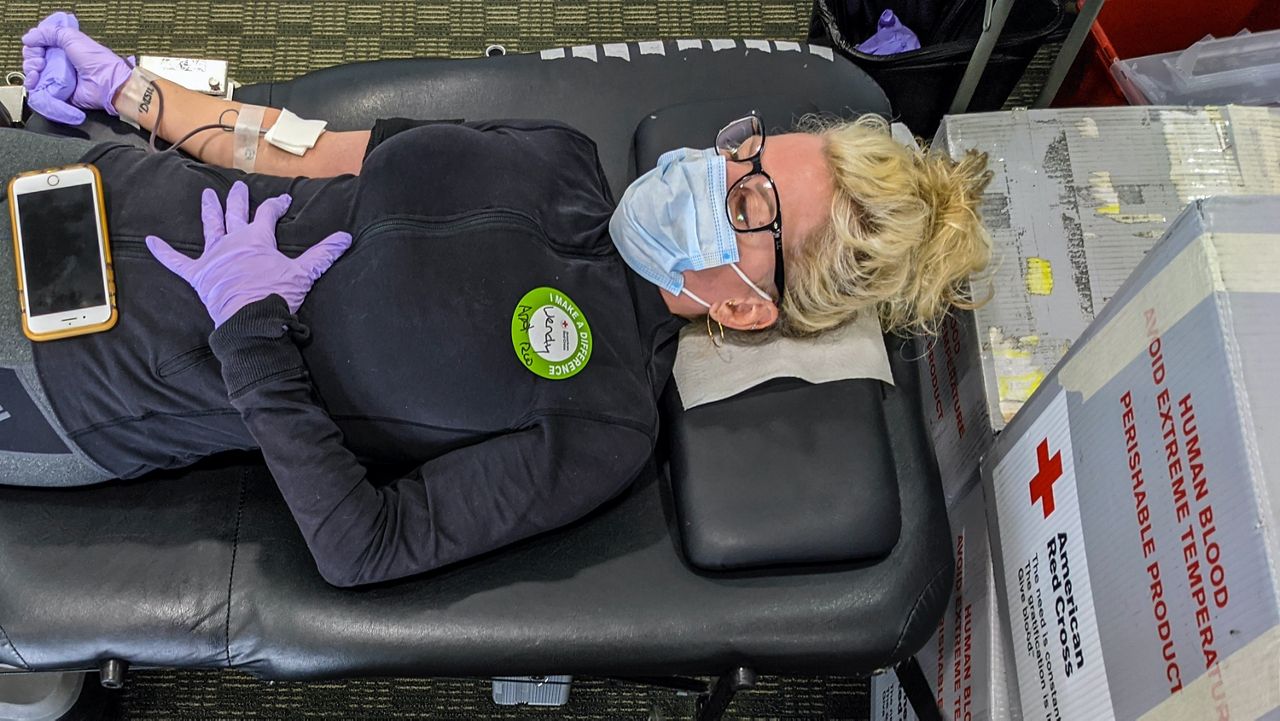LOS ANGELES — It took a team of doctors and nurses six weeks and three surgeries to help Jorge Sincuir recover from a traumatic car crash that smashed the left side of his body, nearly killing him over six years ago.
But it took 27 more unseen hands — blood donors who may never know where their donations went — to save his life. And on any other given day, his blood may have gone to save another person’s life.
“Before the accident, I donated blood, obviously never thinking I would need it,” Sincuir told Spectrum News.
Donations and blood drives are ramping up now after two dire months for blood banks across Los Angeles and the nation. The winter surge of COVID-19’s Omicron variant, combined with a drop in blood drives, led to what the American Red Cross called a “blood crisis.”
In January, the Red Cross announced it had to limit blood distributions to hospitals, citing a 10% decline in the number of people donating since the pandemic began.
Locally, organizations like UCLA Health have pressed on with drives across the Southland. Dr. Dawn Ward, the medical director of UCLA’s Blood and Platelet Center, said that a shortage like this hasn’t been seen in more than a decade. UCLA blood banks, she said, have been able to manage expected daily supplies of blood products, but the shortages have made it difficult for regional blood centers to shore up where they may be lacking.
At the lowest, Ward said that medical centers were operating with less than a day’s worth of blood, leading to rationing and asking doctors to see if patients could be sustained with other medical interventions, rather than using blood products. However, those patients desperately in need of major transfusions, Ward said, were always given what they needed.
“We never had to get to a point where we refused transfusions, but we went above and beyond in getting additional donors to donate, working with surgeons, working with trauma teams, informing other health care professionals in the hospital, so we were fortunate at UCLA,” Ward said.
Crystal Meredith and her husband still think about the transfusion she needed in 2018, at UCLA’s Ronald Reagan Medical Center. While pregnant with her second child, Meredith began bleeding heavily from her vagina — enough to repeatedly soak through multiple heavy-flow maxi pads.
Earlier in her pregnancy, she had been diagnosed with placenta accreta, a complication wherein a placenta attaches to the uterus in an abnormal, and potentially dangerous, fashion.
Meredith was rushed into an emergency cesarean section. Her daughter, Magnolia, was born safely. But the complications didn’t stop there; to deal with the placenta, Merideth underwent a partial hysterectomy.
To deal with her continued heavy bleeding, doctors packed her with gauze, eventually clotting its source.
Meredith woke up six hours after her daughter was born. To keep her alive, she was transfused three times. Later on, Meredith learned she lost about 3,646 cubic centimeters of blood — just shy of a gallon’s worth. (For reference, the human body holds about 1 1/3 gallons of blood.)
Her husband, she recalled, worried that he would have to raise their two children by himself.
“If this was me now, and this had happened, would there have been blood for me? What if there wasn’t any blood for me?” Merideth said. “It’s very sobering to think of it that way.”
“If this was me now and this had happened, would there have been blood for me? What if there wasn’t any blood for me?” Merideth Ward said that UCLA’s blood stores have risen back toward normal levels, and UCLA Health is once again rolling out mobile donation centers as the pandemic surge has ebbed. But they’re still facing challenges driven both by the pandemic and by a reduced interest in donating among young people.
The Blood and Platelet Center is working to get their message back in front of students on campus and in the UCLA community, with the goal of turning them into regular, lifelong donors.
Sincuir began donating blood as a UCLA undergrad, largely because of the freebies given out, and eventually became a regular donor. After his crash, his father followed his example, with the goal of donating three times what Jorge needed to stay alive.
In 2016, Sincuir met three of the 27 people whose donations kept him alive. But, like him, they didn’t feel they were doing anything that special.
“They kept saying, I never thought about it. They gave the blood, and that was the end of it,” Sincuir said. “You’re not going to say, I was doing it for the greater good, thinking I was any sort of hero… but the big thing is, it’s just a good experience to donate.
”To find a donation center near you, visit uclahealth.org/gotblood or redcrossblood.org.



